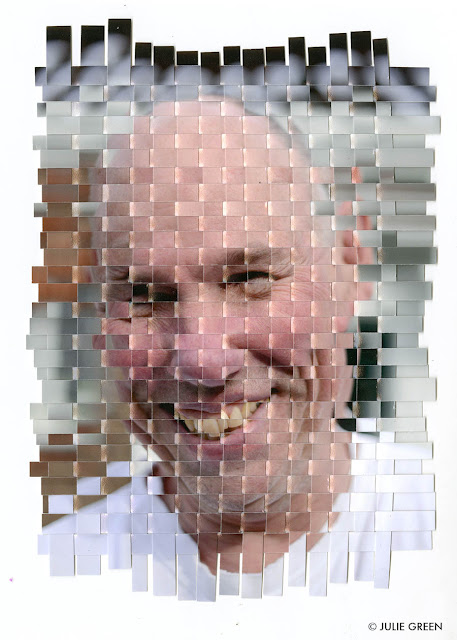Angles in August: Julian Balme
After graduating from a graphic design
degree course at the London College of Printing in 1979, Julian Balme’s first job was at seminal independent
record label, Stiff Records. He came up with the logo and debut album
sleeve for Madness and designed the first of numerous hit single sleeves (Jona
Lewie, You’ll Always Find Me in the Kitchen at Parties).
He left Stiff to go freelance in
the spring of 1980, producing work for a plethora of chart topping acts
including Adam & the Ants, Big Country, Blancmange, The Clash, Iggy
Pop, Psychedelic Furs, Bruce Springsteen, Tears For Fears, Texas,
Transvision Vamp and over a 1000 more record and CD covers, many of which have become pop-cultural icons (some have even picked up the odd award or two).
Unusually, he rarely credited himself on
the sleeves - a trait he copied from legendary designer Barney Bubbles - and as
a result his work is well known though seldom recognized as his.
For the last 2 decades he has been
involved in all aspects of print design for the art, publishing and classic car
world, from high-end books and magazines to advertising and brochures.
His passion for old cars still prevails.
In his ‘hobby career’ as a journalist, his words are often read in the classic
car press and he has been involved in historic motorsport for over 30 years
competing all around the world with predominantly American cars.
I'm tickled pink to present this woven portrait of Julian and am honored that he has shared with us a memory of how rock n' roll changed his life.
Julie Green
August 27, 2016
Its that JFK moment. Thing is I remember it as clear as day. My parents were friendly with another couple who had a son 7 or 8 years my senior, Leigh. I looked up to him as I would an elder brother. He was a very cool guy who had just started art school and lived in the attic of his folks home in a bedroom painted orange with black gloss woodwork. In his room he also had a great stereo…
Not long after my father died in the autumn of 1968, my mother and I visited the family. We’d barely been there minutes before I found myself in Leigh’s bedroom holding the gatefold album cover for a new record he was more than a bit excited about. Given that the sleeve featured numerous naked women, I too, even at the tender age of 11, was sharing his excitement. And then he played it…
This was not the Beatles. This was from another planet…
After the sonic bombardment of its first minute and 23 seconds the LP settled into a mellow groove. I had barely got my breath back before the third track cascaded out of Leigh’s Wharfdale speakers. Bamp bamp de bamp bamp de bamp… I was hooked.
4 sides of 12 inch vinyl later and with the dying refrains of Voodoo Chile (Slight Return) still ringing in my ears, I had a new hero. His name was Jimi Hendrix.
As we returned back downstairs Leigh’s mum looked up and said, I hope you didn’t show Julian the sleeve of that new record of yours…
Hendrix hated it and US copies of Electric Ladyland featured a different cover - as did subsequent re-releases. He might have been a great guitarist but he was wrong about the cover. I met the designer, David King who sadly died earlier this year, and enjoyed telling him that he and Hendrix had been my year zero. That’s where it all started for me…

Comments
Post a Comment